Start a fitness business with personal training, combining passion and purpose.
Create custom workout plans, give nutrition advice, and build a community that cheers for every move towards a healthier life.
Being a personal trainer is more than just a job; it’s a life-changing experience for both you and your clients.
1: Virtual Personal Training Platform

Ideas:
Create a virtual platform that connects certified personal trainers with clients searching for personalized fitness standards. This platform can include live video sessions, pre-recorded workout plans, and progress tracking.
The potential of this Idea:
The demand for virtual fitness services has increased, offering convenience and accessibility. This idea can tap into a global market with the right marketing strategy.
Cost Estimate:
| Expense | Estimated Cost |
| Website Development | $5,000 – $10,000 |
| Marketing | $3,000 – $5,000 |
| Trainer Onboarding | $2,000 – $4,000 |
| Platform Maintenance | $1,000 – $2,000 |
Key Risks:
Dependence on technology, competition saturation, and the need for high-quality trainers may pose challenges.
Already Running Business Examples:
- Zoom Fitness
- Trainerize
Steps to Start:
- Develop a user-friendly website/app.
- Recruit certified trainers.
- Implement a secure payment system.
- Launch a marketing campaign.
Success Ratio:
High, given the increasing demand for virtual fitness solutions.
Estimated Time to Success:
6-12 months for initial traction, 1-2 years for significant growth.
Requirements:
- Certified Personal Trainers
- Tech-savvy individuals for platform maintenance
- Marketing team
Qualifications:
- Trainers:
Relevant certifications
- Tech Team:
Web development experience
- Marketing:
Digital marketing expertise
Pro Key Tips:
Invest in high-quality video production, prioritize user experience, and focus on marketing to build a robust user base.
2: Boutique Personal Training Studio
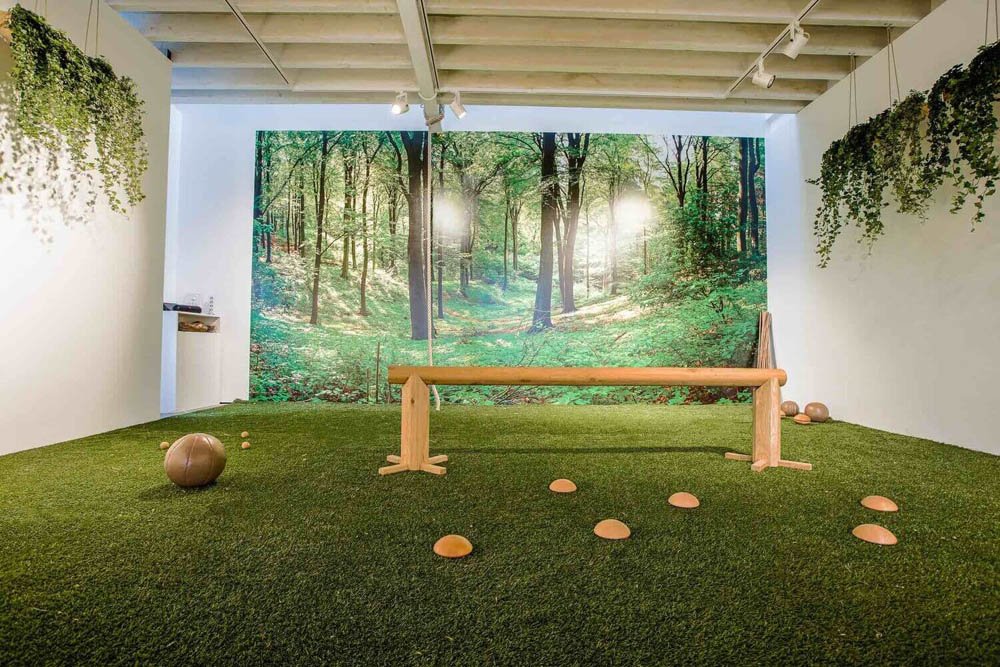
Ideas:
Open a boutique fitness studio that offers exclusive and personalized training sessions. Specialize in a niche, such as high-intensity interval training (HIIT) or yoga.
The potential of this Idea:
Boutique fitness is on the rise due to its personalized approach. Focusing on a specific niche can attract a dedicated client base.
Cost Estimate:
| Expense | Estimated Cost |
| Studio Rent | $3,000 – $6,000 |
| Equipment | $10,000 – $15,000 |
| Interior Design | $5,000 – $8,000 |
| Marketing | $2,000 – $4,000 |
Key Risks:
Economic downturn affecting disposable income, competition with larger gyms, and seasonal fluctuations.
Already Running Business Examples:
- Barry’s Bootcamp
- Pure Barre
Steps to Start:
- Choose a niche.
- Find a suitable location.
- Design and set up the studio.
- Recruit certified trainers.
- Launch a marketing campaign.
Success Ratio:
Moderate to high, depending on location and marketing effectiveness.
Estimated Time to Success:
12-18 months for steady growth.
Requirements:
- Certified Personal Trainers
- Interior designer
- Marketing team
Qualifications:
- Trainers:
Relevant certifications
- Designer:
Interior design experience
- Marketing:
Fitness industry knowledge
Pro Key Tips:
Create a unique ambiance, offer specialized classes, and build a strong community through events and challenges.
3: Corporate Wellness Programs

Ideas:
Provide personalized fitness and wellness programs to businesses. Offer on-site or virtual sessions to improve employee health and productivity.
The potential of this Idea:
Corporate wellness is gaining importance. Companies are increasingly investing in employee well-being, making this a lucrative market.
Cost Estimate:
| Expense | Estimated Cost |
| Marketing | $3,000 – $5,000 |
| Trainer Recruitment | $2,000 – $4,000 |
| Materials & Equipment | $1,000 – $3,000 |
| Administrative Setup | $2,000 – $4,000 |
Key Risks:
Collective budget constraints, securing contracts, and adapting programs to diverse employee needs.
Already Running Business Examples:
- Virgin Pulse
- WellSteps
Steps to Start:
- Develop tailored wellness programs.
- Create a marketing strategy targeting HR departments.
- Hire certified trainers.
- Establish administrative processes.
- Approach companies with proposals.
Success Ratio:
High, given the growing emphasis on employee well-being.
Estimated Time to Success:
6-12 months to secure initial contracts, 1-3 years for widespread adoption.
Requirements:
- Certified Personal Trainers
- Administrative Staff
- Marketing team
Qualifications:
- Trainers:
Relevant certifications
- Admin Staff:
Organizational skills
- Marketing:
Corporate outreach expertise
Pro Key Tips:
Customize programs to fit corporate needs, focus on measurable outcomes, and emphasize the long-term benefits of employee wellness.
4: Outdoor Adventure Fitness Classes
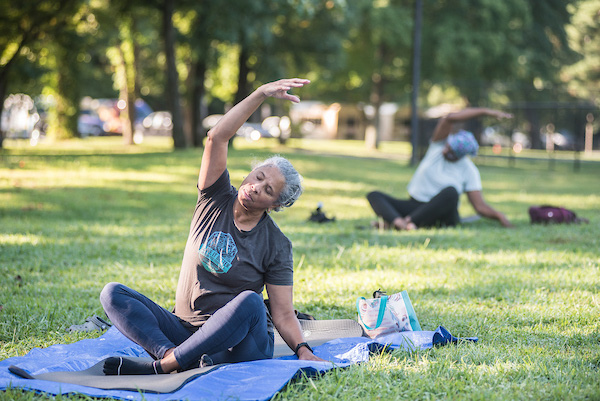
Ideas:
Combine fitness training with outdoor adventures such as hiking, obstacle courses, or beach workouts. Offer a unique and exhilarating experience that attracts fitness fans looking for an alternative to traditional gym settings.
The potential of this Idea:
Outdoor fitness activities are gaining popularity due to the desire for fresh air and diverse workout experiences. This idea taps into the growing demand for unusual fitness approaches.
Cost Estimate:
| Expense | Estimated Cost |
| Outdoor Equipment | $8,000 – $12,000 |
| Marketing | $2,500 – $4,500 |
| Trainer Certification | $1,500 – $3,000 |
| Permits and Licenses | $1,000 – $2,000 |
Key Risks:
Weather-dependent, seasonal variations, and potential location restrictions.
Already Running Business Examples:
- Adventure Boot Camp
- Wild Fitness
Steps to Start:
- Plan unique outdoor workouts.
- Acquire necessary permits.
- Invest in quality outdoor equipment.
- Hire certified trainers.
- Launch a marketing campaign targeting adventure seekers.
Success Ratio:
Moderate to high, depending on the uniqueness of your offerings and effective marketing.
Estimated Time to Success:
6-12 months to build a steady clientele.
Requirements:
- Certified Outdoor Fitness Trainers
- Outdoor equipment suppliers
- Marketing team
Qualifications:
- Trainers:
Outdoor fitness certifications
- Equipment Suppliers:
Knowledge of durable outdoor gear
- Marketing:
Outdoor and adventure market expertise
Pro Key Tips:
Create captivating promotional material showcasing the adventure aspect, authority social media for marketing, and consider partnerships with outdoor gear brands for sponsorships.
5: Senior Fitness and Wellness Programs

Ideas:
Design customized fitness and wellness programs for seniors. Offer a range of activities, including low-impact exercises, flexibility training, and social engagement, to improve the overall well-being of the elderly population.
The potential of this Idea:
The aging population is increasing, creating a significant market for fitness services catering to seniors. This idea addresses the unique needs of this demographic.
Cost Estimate:
| Expense | Estimated Cost |
| Certified Senior Trainers | $4,000 – $8,000 |
| Marketing | $2,000 – $4,000 |
| Venue Rental (if applicable) | $3,000 – $6,000 |
| Equipment for Seniors | $1,500 – $3,000 |
Key Risks:
Health concerns of the target people, building trust with seniors and their families, and potential regulation challenges.
Already Running Business Examples:
- SilverSneakers
- Ageless Grace
Steps to Start:
- Hire trainers experienced in senior fitness.
- Design programs with a focus on safety and effectiveness.
- Establish partnerships with senior living communities or local community centers.
- Launch a marketing campaign highlighting the benefits for seniors.
Success Ratio:
Moderate to high, depending on the local senior population and the effectiveness of the programs.
Estimated Time to Success:
12-18 months to become a recognized provider in the senior fitness niche.
Requirements:
- Certified Senior Fitness Trainers
- Partnerships with senior community centers
- Marketing team
Qualifications:
- Trainers:
Certifications in senior fitness training
- Partnerships:
Knowledge of the senior community landscape
- Marketing:
Understanding of effective communication with seniors and their families
Pro Key Tips:
Emphasize safety in all programs, build trust through recommendations and referrals, and consider offering free workshops to introduce seniors to your services.
6: Wellness Retreats for Mind-Body Transformation

Ideas:
Organize wellness retreats that focus on comprehensive health, combining fitness training, mindfulness activities, and nutritional education. Offer absorbing experiences in scenic locations to promote mental and physical well-being.
The potential of this Idea:
Wellness retreats are increasingly popular for those researching a break from routine. This idea caters to individuals looking for game-changing experiences that address both mental and physical health.
Cost Estimate:
| Expense | Estimated Cost |
| Venue and Accommodation | $15,000 – $25,000 |
| Certified Trainers and Coaches | $8,000 – $12,000 |
| Marketing | $5,000 – $8,000 |
| Wellness Materials and Equipment | $3,000 – $5,000 |
Key Risks:
Dependence on seasonal trends, competition with established retreats, and the challenge of curating a unique and appealing experience.
Already Running Business Examples:
- The Ranch Malibu
- Unplug Meditation Retreats
Steps to Start:
- Choose a compelling location.
- Enroll certified trainers and wellness coaches.
- Plan a diverse itinerary.
- Develop a marketing strategy targeting wellness addicts.
- Collaborate with travel agencies for package deals.
Success Ratio:
Moderate to high, based on the uniqueness of the retreat experience.
Estimated Time to Success:
12-24 months to establish a reputation and attract a steady stream of participants.
Requirements:
- Certified Trainers and Wellness Coaches
- Event Planners
- Marketing team
Qualifications:
- Trainers and Coaches:
Relevant certifications and experience in holistic wellness
- Event Planners:
Experience in organizing retreats
- Marketing:
Wellness and travel industry knowledge
Pro Key Tips:
Focus on creating a transformative experience, partner with local businesses for added activities, and use social media engagers to promote your retreats.
7: Mobile Fitness Lab for Workplace Wellness
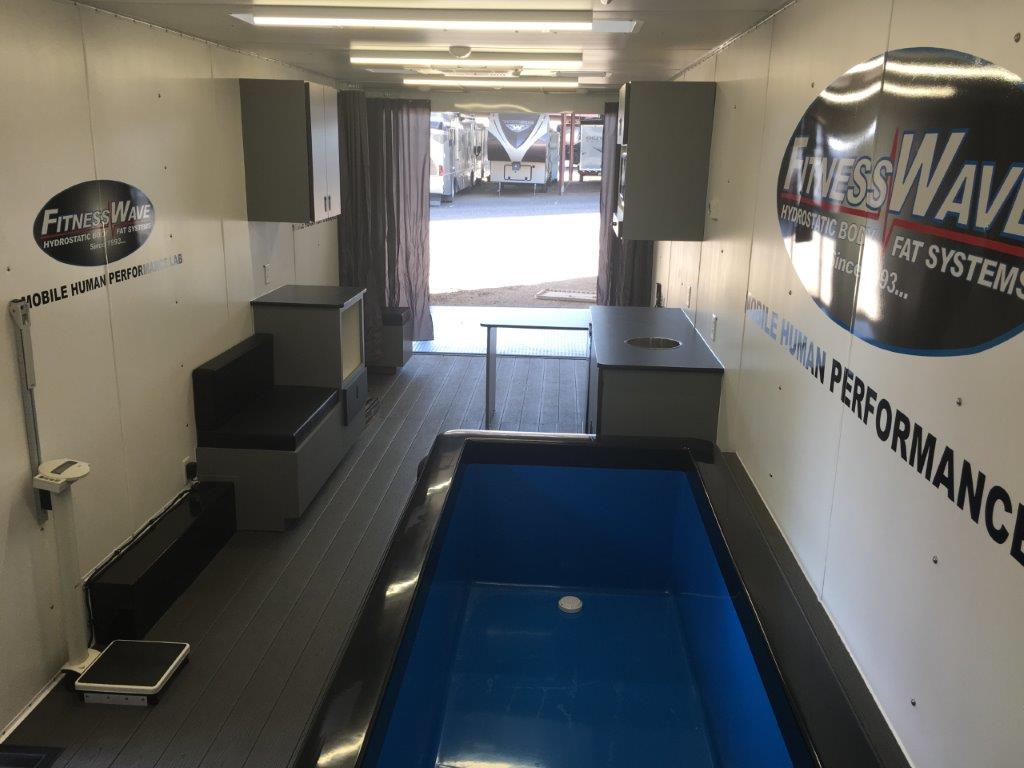
Ideas:
Introduce a mobile fitness lab that brings wellness directly to workplaces. Provided with state-of-the-art fitness assessment tools and certified trainers, this service provides on-site health and fitness programs for employees.
The potential of this Idea:
Business wellness programs are in high demand, and a mobile fitness lab offers a convenient solution for companies looking to prioritize their employees’ health.
Cost Estimate:
| Expense | Estimated Cost |
| Mobile Lab Setup | $20,000 – $30,000 |
| Certified Trainers | $6,000 – $10,000 |
| Marketing | $3,000 – $5,000 |
| Health Assessment Tools | $5,000 – $8,000 |
Key Risks:
Collective budget constraints, establishing trust with companies, and potential competition from established workplace wellness providers.
Already Running Business Examples:
- Crossover Health
- Wellable
Steps to Start:
- Invest in a customized mobile fitness lab.
- Hire certified trainers and health assessors.
- Develop flexible wellness programs.
- Reach out to businesses through targeted marketing.
- Offer free workshops or assessments to attract clients.
Success Ratio:
High, given the increasing emphasis on workplace wellness.
Estimated Time to Success:
6-12 months to secure contracts, 1-2 years for widespread adoption.
Requirements:
- Certified Trainers and Health Assessors
- Mobile Lab Technicians
- Marketing team
Qualifications:
- Trainers:
Relevant certifications and experience in workplace wellness
- Technicians:
Knowledge of health assessment tools
- Marketing:
Corporate outreach expertise
Pro Key Tips:
Customize programs based on each company’s needs, provide regular progress reports, and offer incentives for employee participation.
8: Tech-Integrated Fitness Gaming Center
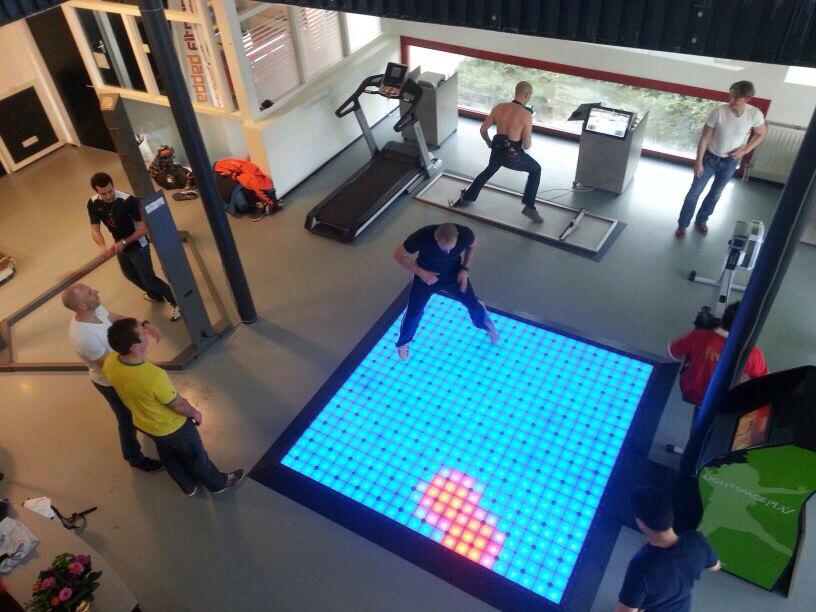
Ideas:
Create a fitness gaming center where clients engage in attractive, technology-driven workouts. Utilize virtual reality (VR) and expanded reality (AR) technologies to make exercise more enjoyable and appealing to a tech-smart audience.
The potential of this Idea:
The merging of technology and fitness is a rising trend. This idea targets individuals who enjoy gaming and seek a unique and entertaining approach to staying fit.
Cost Estimate:
| Expense | Estimated Cost |
| VR/AR Equipment | $30,000 – $50,000 |
| Gaming Center Setup | $15,000 – $25,000 |
| Marketing | $5,000 – $8,000 |
| Tech Support Staff | $7,000 – $12,000 |
Key Risks:
High initial investment, dependence on technology, and the need for continuous invention to stay competitive.
Already Running Business Examples:
- Black Box VR
- The VOID
Steps to Start:
- Invest in cutting-edge VR/AR equipment.
- Set up a gaming center with a deeply engaging environment.
- Develop fitness gaming programs.
- Launch a marketing campaign targeting gamers and fitness fans.
Success Ratio:
Moderate to high, based on the uniqueness of the gaming experience.
Estimated Time to Success:
12-18 months to attract a steady flow of customers.
Requirements:
- VR/AR Developers
- Gaming Center Staff
- Marketing team
Qualifications:
- Developers:
Experience in VR/AR development
- Staff:
Gaming industry knowledge
- Marketing:
Understanding of the gaming and fitness market
Pro Key Tips:
Regularly update gaming programs, crowd gaming competitions, and collaborate with gaming commercial stars to increase visibility.
9: Family Fitness Fun Centers

Ideas:
Create a family-oriented fitness center that combines exercise with fun activities for all ages. Offer family workout sessions, interactive fitness games, and wellness programs that cater to both parents and children.
The potential of this Idea:
Families are increasingly looking for activities that promote health and togetherness. This idea taps into the demand for a full approach to family fitness.
Cost Estimate:
| Expense | Estimated Cost |
| Family Fitness Equipment | $15,000 – $20,000 |
| Kids’ Activity Area Setup | $8,000 – $12,000 |
| Marketing | $3,000 – $5,000 |
| Staff Hiring (Certified Trainers) | $10,000 – $15,000 |
Key Risks:
Balancing safety concerns for different age groups, seasonal variations, and the need for a diverse range of activities.
Already Running Business Examples:
- My Gym
- The Little Gym
Steps to Start:
- Design family-friendly workout programs.
- Set up a dedicated kids’ activity area.
- Invest in versatile fitness equipment.
- Recruit certified trainers.
- Market the center as a family wellness destination.
Success Ratio:
Moderate to high, based on the uniqueness of the family-key concept.
Estimated Time to Success:
12-18 months to become a recognized family fitness center.
Requirements:
- Certified Trainers
- Family activity coordinators
- Marketing team
Qualifications:
- Trainers:
Certification in family fitness
- Coordinators:
Understanding of child growth and family dynamics
- Marketing:
Family and wellness industry knowledge
Pro Key Tips:
Offer package deals for families, mass family-friendly events, and collaborate with schools and community centers to promote your programs.
10: Health and Fitness App for Specialized Communities
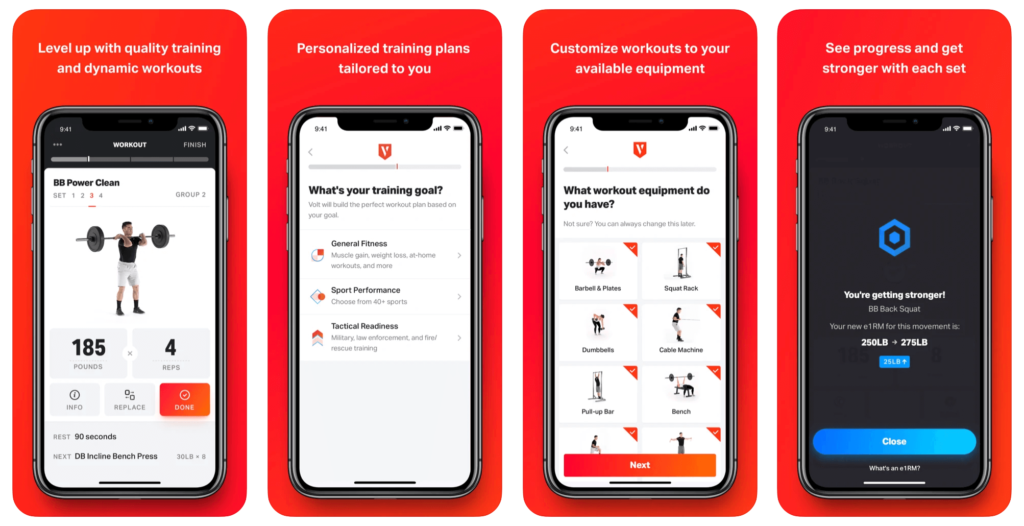
Ideas:
Develop a mobile app specifically tailored for niche fitness communities, such as seniors, or individuals with specific health conditions. Offer personalized workout plans, nutrition guidance, and a supportive community for targeted fitness goals.
The potential of this Idea:
Niche fitness communities are often underserved. This idea provides to individuals with specific needs and provides a sense of community.
Cost Estimate:
| Expense | Estimated Cost |
| App Development | $20,000 – $40,000 |
| Community Management | $5,000 – $8,000 |
| Marketing | $3,000 – $5,000 |
| Content Creation | $8,000 – $12,000 |
Key Risks:
Ensuring the app meets the unique needs of the targeted community, competes with generic fitness apps, and stays updated with health guidelines.
Already Running Business Examples:
- Mommycise Fitness App
- SilverSneakers GO
Steps to Start:
- Identify a specific niche (e.g., postpartum fitness, arthritis-friendly exercises).
- Develop an app with user-friendly features.
- Recruit community managers.
- Create specialized content.
- Launch a marketing campaign within the targeted community.
Success Ratio:
High, given the demand for specialized fitness solutions.
Estimated Time to Success:
6-12 months to build a thriving community.
Requirements:
- App Developers
- Community Managers
- Marketing team
Qualifications:
- Developers:
App development expertise
- Managers:
Understanding of community dynamics
- Marketing:
Targeted community outreach experience
Pro Key Tips:
Regularly update content based on user feedback, foster community engagement through meetings and challenges, and collaborate with healthcare professionals for expert input.




